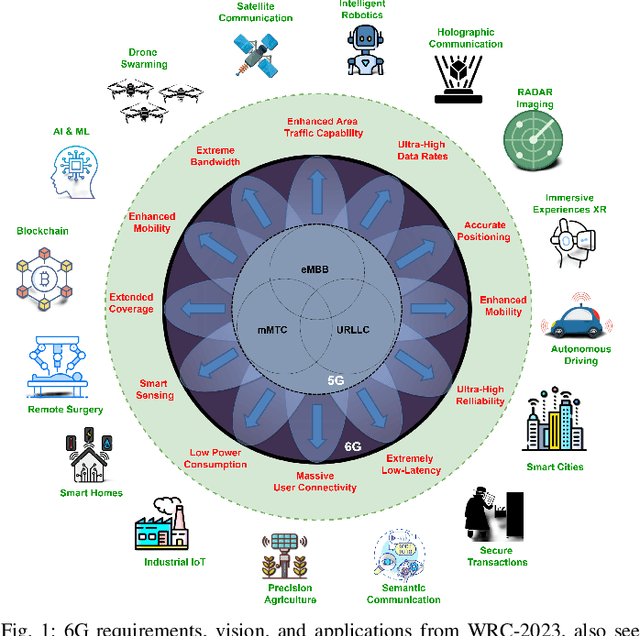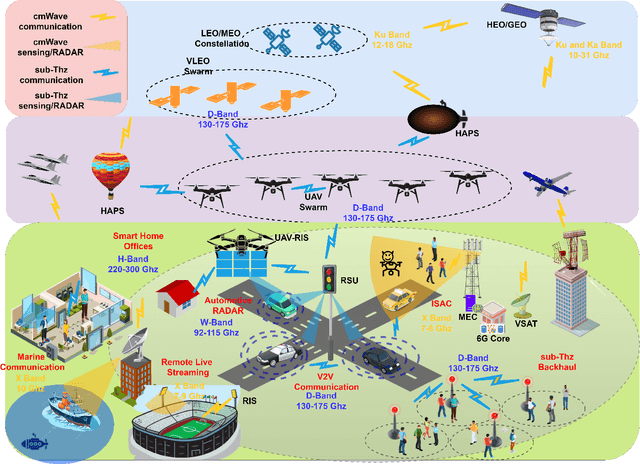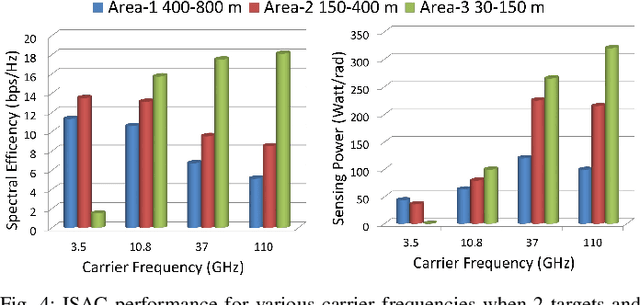CmWave and Sub-THz: Key Radio Enablers and Complementary Spectrum for 6G
Paper and Code
Jun 26, 2024



Sixth-generation (6G) networks are poised to revolutionize communication by exploring alternative spectrum options, aiming to capitalize on strengths while mitigating limitations in current fifth-generation (5G) spectrum. This paper explores the potential opportunities and emerging trends for cmWave and sub-THz spectra as key radio enablers. This paper poses and answers three key questions regarding motivation of additional spectrum to explore the strategic implementation and benefits of cmWave and sub-THz spectra. Also, we show using case studies how these complementary spectrum bands will enable new applications in 6G, such as integrated sensing and communication (ISAC), re-configurable intelligent surfaces (RIS) and non-terrestrial networks (NTN). Numerical simulations reveal that the ISAC performance of cmWave and sub-THz spectra outperforms that of existing 5G spectrum, including sub-6 GHz and mmWave. Additionally, we illustrate the effective interplay between RIS and NTN to counteract the effects of high attenuation at sub-THz frequencies. Finally, ongoing standardization endeavors, challenges and promising directions are elucidated for these complementary spectrum bands.
 Add to Chrome
Add to Chrome Add to Firefox
Add to Firefox Add to Edge
Add to Edge